Team
Meet the team!
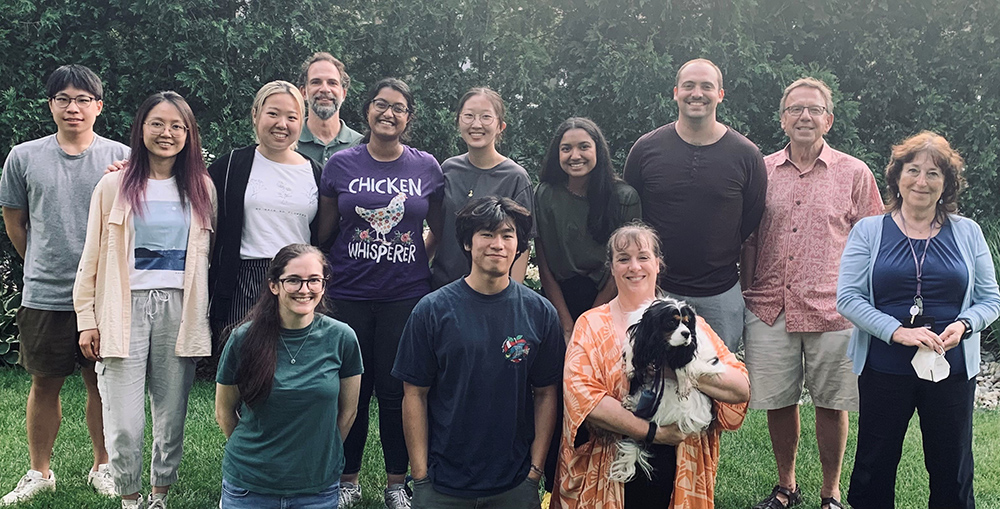
PRINCIPAL INVESTIGATOR

William Klein, PhD
Professor of Neurobiology and of Neurology
Dr. Klein and his colleagues introduced the amyloid beta oligomer hypothesis for the cause of Alzheimer’s disease in 1998. His 150+ papers and patents on AβOs have been cited more than 35,000 times. AβOs are now widely regarded as providing a molecular basis for the cause, diagnosis and treatment of Alzheimer’s. Acumen Pharmaceuticals, a biotech he co-founded with Drs. Caleb Finch and Grant Krafft, employs over 60 persons, is publicly traded, and has an AβO-selective therapeutic antibody in an ongoing clinical trial (sabirnetug/ACU193).
Dr. Klein is Professor of Neurobiology in the Weinberg College of Arts and Sciences and Professor of Neurology in the Feinberg School of Medicine. He is a member of the Mesulam Center for Cognitive Neurology and Alzheimer’s Disease and of the Chemistry of Life Processes Institute. He formerly was Director of Northwestern University’s Interdepartmental Neuroscience program. He is an elected foreign member of the Brazilian Academy of Science, a recipient of the Zenith Award from the Alzheimer’s Association, and Field Chief Editor of the new journal Frontiers in Dementia.
Before joining Northwestern University, Dr. Klein graduated from MIT in biology and carried out predoctoral studies in membrane protein biochemistry at UCLA with Paul Boyer (Nobel Prize, Chemistry) and postdoctoral studies in molecular neurobiology at the National Institutes of Health with Marshall Nirenberg (Nobel Prize, Physiology and Medicine).
RESEARCH LABORATORY MANAGER
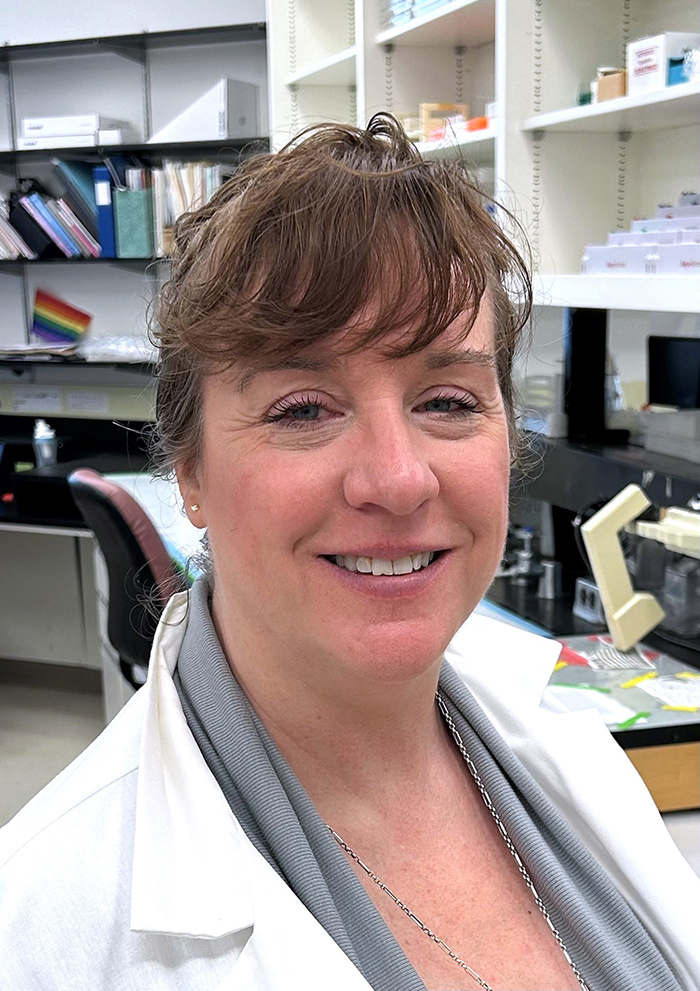
Kirsten L. Viola
Research Laboratory Manager
My research interests include the development of assays to measure Aβ oligomer levels in biological samples from Alzheimer’s disease patients, rabbit models for sporadic Alzheimer’s disease, and transgenic mice models. This includes assays to isolate endogenous AβOs from tissue samples and isolate membrane proteins that act as targets for AβO binding. I also have an interest in the development of better therapeutics for the treatment of Alzheimer’s disease. This line of research involves the development of new potential therapeutics, such as therapeutic antibodies that target AβOs in vivo, and analyzing the therapeutic effects of antibodies and compounds on AβO oligomer development, memory impairment, and disease progression in various animal and cell models. Previous work has included characterization of both synthetic and endogenous AβO binding to neurons with an emphasis on binding characteristics and resulting toxic responses, development and characterization of anti-AβO antibodies, and use of these antibodies to show that AβOs bind selectively to cells in a punctate manner and blocking this binding with anti-AβO antibodies prevents AβO-induced toxicity.
RESEARCH SPECIALTISTS
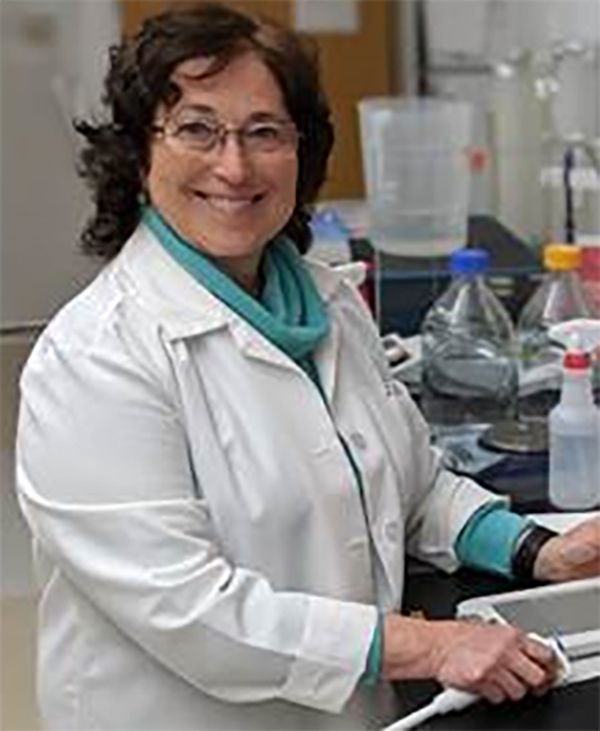
Irina Shepotinovskaya, PhD
Research Specialist
Amyloid beta oligomers (AβOs) are known as neurotoxins linked to the onset of Alzheimer’s disease (AD) in the aging nervous system, but new findings show that AβOs also are briefly expressed by the immature nervous system and play an essential role in neurodevelopment. My interest is focused on the mechanism of cell-cell communication through which the AβOs, as proposed signaling molecules, can deliver the important information for differentiation, migration, and synaptic plasticity during the early development of CNS. My work is inspired by multiple scientific findings that exosomes contain a diverse cargo of bio-molecules and play a crucial role in cell communication. We purify and analyze the neuronal extracellular vesicles (EV) from the developing chick retina (“brain outside the brain”) using multiple modern techniques: ultracentrifugation, electron microscopy, immunoblotting, NTA, FFF. The study can help to understand the role of AβOs in mediating the neurogenesis and provide important information on mechanisms leading to neuronal damage.
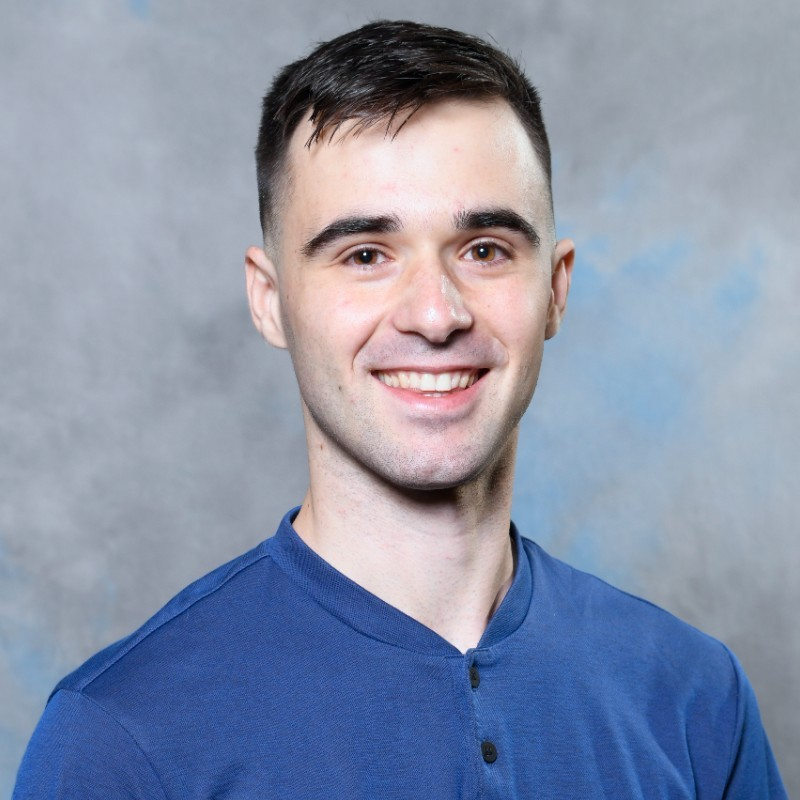
Brendan Hood, MSc
Research Specialist
My research focuses on investigating the presence of AβOs in the developing Central Nervous System. AβOs have been shown to be neurotoxic and germane to the onset and progression of Alzheimer’s Disease. Despite this, they are transiently expressed in the developing retina of chicks. My research has revolved around determining expression and regulation differences for varying AβO subgroups. More recently we have begun exploring the connections between AβOs and extracellular vesicles in development and how the two interact and contribute to potential functionality of AβOs in development. This has been done using immunofluorescence and super-resolution microscopy in fixed tissue and cell cultures. Further investigation of this topic would reveal information on AβO function and formation in development that could translate to providing therapeutic targets in Alzheimer’s Disease.
POSTDOCS
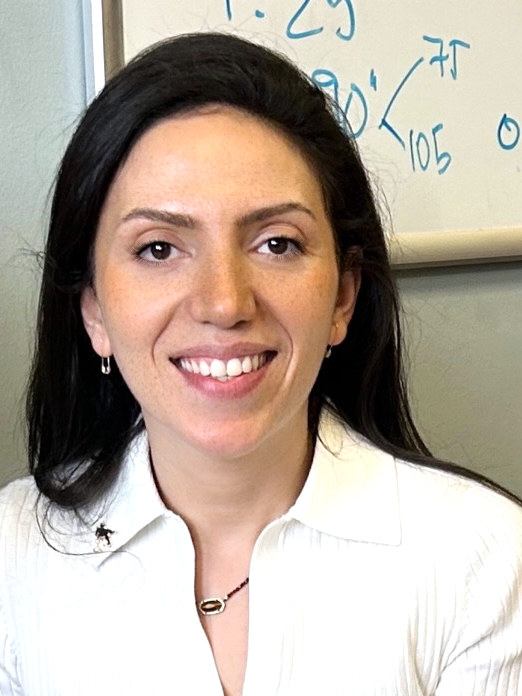
Raghad Nowar, PhD
Post-Doc
My research focuses on Alzheimer’s disease therapeutics by developing cell-based assays to evaluate multiple drug candidates in collaboration with the Silverman laboratory. NU-9 is a drug candidate being researched for its potential in treating Amyotrophic Lateral Sclerosis (ALS). In the Kelin Laboratory, we have shown that it reduces the buildup of neurotoxic AβOs by ~80% via cell-mediated mechanisms. A further component of my research examines the effects of multiple AβOs species and their vesicular trafficking on nitric oxide levels in neuronal cultures. With immunofluorescence and super-resolution microscopy, my current research focuses on identifying NU-9’s MOA and investigating selective neuronal nitric oxide synthase (nNOS) inhibitors as potential Alzheimer’s therapeutics.
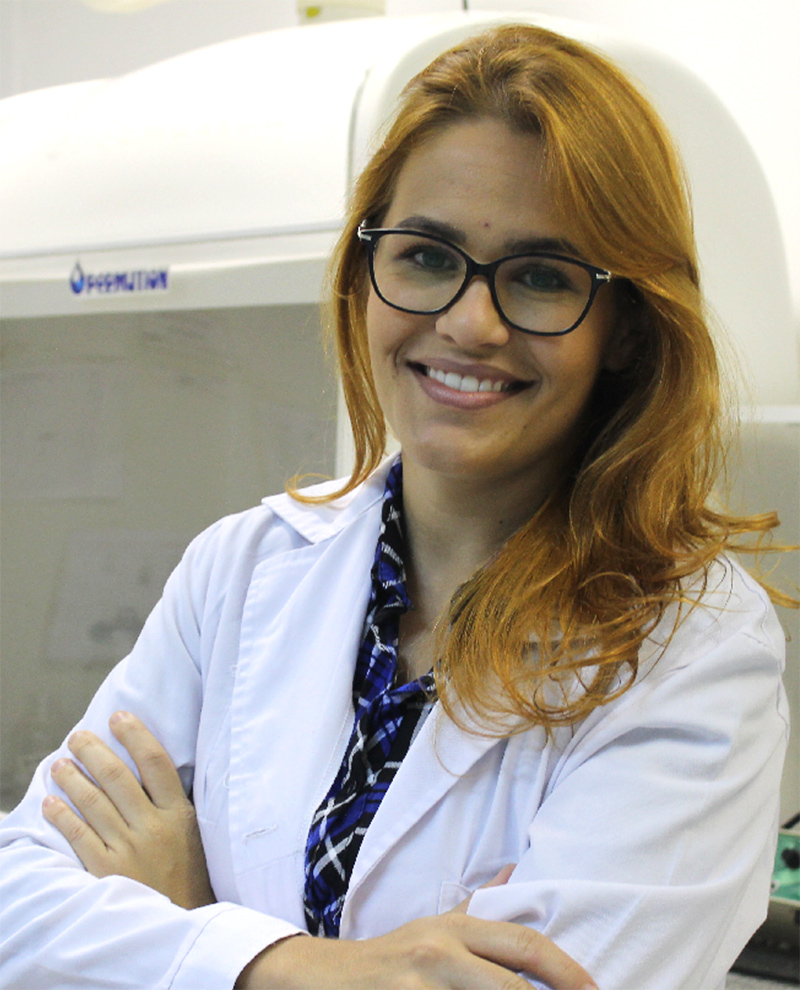
Raquel De Campos, PhD
Post-Doc
My research focuses on Alzheimer’s disease, specifically investigating the use of the single-chain scFv antibody NUsc1 to isolate, characterize, and detect toxic species of Aβ oligomers, which are the primary toxic agents in the pathophysiology of AD. The goal is to enhance our understanding of the structural motifs shared by these toxic oligomers and to develop sensitive methods for detecting them in peripheral samples from human patients, thereby advancing biomolecular diagnostics for AD. In collaboration with experts in top-down native mass spectrometry (Kelleher group), protein-based molecule engineering (Mrksich group), electrochemical ultrasensitive sensors (Dr. Vuslat Juska), and NUsc1 scFv research (Sebollela group), my primary aim is to contribute to groundbreaking research that unravels the complex identity of Aβ oligomers and enables pre-symptomatic AD detection, paving the way for the development of more targeted theranostic strategies.
GRADUATE STUDENTS

Dan Kranz
PhD Student, IBiS
My research focuses on the spatiotemporal progression of AβOs in 5xFAD mice and understanding how different AβO subtypes associate with pathological hallmarks of Alzheimer’s disease. We’re especially interested in one species of AβOs, probed by clinical trial antibody ACU193, that appears to be particularly relevant at pathological onset; its concentration within early neurons directly correlates to the neuron’s extent of degeneration. It later putatively exits its host degenerating neuron and proceeds to have a remarkable association with activated glia: binding early reactive astrocytes before becoming engulfed in late-stage activated microglia. We are now working to characterize this species at the molecular level and better understand its mechanisms of action.

Omar De Leon Velez
PhD Student, IBiS
My project examines the structural biology of amyloid beta oligomers (AβOs). While AβOs are correlated to many pathological aspects of Alzheimer’s disease, it is not completely understood how specific oligomeric assemblies are active and how these are structurally defined. I am using several of our oligomer-selective antibodies to isolate AβOs from human Alzheimer’s disease brains and determine their structure using electron microscopy and native mass spectrometry. These contributions will give mechanistic understanding of the native AβO structure-to-function relationship while also providing a therapeutic target.
UNDERGRADUATE STUDENTS

Sean Luo
Undergraduate Researcher, Neurobiology
While the effects of AβO pathology are evident in the Alzheimer’s disease brain, the propagation and mechanisms of such pathways are not well understood. Our research examines AβO localization, concentration, and toxicity using different cell lines and drugs. For example, stress-induced expression of AβOs in MC65 cells and subsequent toxicity assays reveal the neurotoxicity and time course of intracellular AβO pathways (i.e., since MC65 cells endogenously express AβOs, we can investigate intracellular consequences independent of receptor-mediated effects). Understanding how AβOs propagate throughout the brain and their mechanisms of neurotoxicity provide opportunities for identifying potential drug targets and understanding what happens between AβO formation and the onset of neuronal dysfunction and eventual death. Disruption of pathological cascades before irreversible damage may prove to be an effective early intervention strategy in Alzheimer’s disease.

Sam Deng
Undergraduate Researcher, Neurobiology
While the effects of AβO pathology are evident in the Alzheimer’s disease brain, the propagation and mechanisms of such pathways are not well understood. Our research examines AβO localization, concentration, and toxicity using different cell lines and drugs. For example, stress-induced expression of AβOs in MC65 cells and subsequent toxicity assays reveal the neurotoxicity and time course of intracellular AβO pathways (i.e., since MC65 cells endogenously express AβOs, we can investigate intracellular consequences independent of receptor-mediated effects). Understanding how AβOs propagate throughout the brain and their mechanisms of neurotoxicity provide opportunities for identifying potential drug targets and understanding what happens between AβO formation and the onset of neuronal dysfunction and eventual death. Disruption of pathological cascades before irreversible damage may prove to be an effective early intervention strategy in Alzheimer’s disease.

Josh Jerisha
Undergraduate Researcher, Neurobiology
My research is concerned with the structural characteristics of neurotoxic amyloid beta oligomers (AβOs), namely their morphology, molecular weight (MW), and isoelectric point (pI). My current project is a collaboration with Omar De Leon and Raquel De Campos. We leverage various oligomer-selective antibodies to isolate neurotoxic AβOs from brain tissue for subsequent structural analysis. I am responsible for atomic force microscopy (AFM), an imaging modality that probes AβO morphology in 3D at nanometer resolution. I have also begun work with two-dimensional electrophoresis to establish MW-pI profiles of AβOs. Our preliminary results suggest that brain-derived AβOs are predominantly globular, high MW species, consistent with previous neurotoxicity studies of synthetic AβOs. Ultimately, this research seeks to elucidate the structural identity of a causative agent of AD, providing a tractable target for early-stage diagnosis and treatment of AD.

Cindy Xue
Undergraduate Researcher, Neurobiology
My research, in collaboration with Dan Kranz, focuses on understanding how different AβO subtypes associate with pathological markers of Alzheimer’s disease (AD) throughout disease progression. Currently, my project is on refining and optimizing existing assays to accurately compare the sizes of amyloid-beta oligomers (AβOs) probed by distinct oligomer-specific antibodies. By characterizing the molecular sizes of AβOs and their corresponding antibody-binding profiles, we aim to gain a deeper understanding of size-associated neurotoxicity. We are particularly interested in identifying a specific AβO species, targeted by the clinical trial antibody ACU193, that appears to play a pivotal role during early stages of AD pathology. This species initially associates with activated glial cells early on, binding early reactive astrocytes, before being engulfed by microglia in later stages. Given ACU193’s unique glial interactions of the AβOs it binds, identifying the molecular weight profile of this AβO species holds significant therapeutic and diagnostic potential.

Shreya Ruia
Undergraduate Researcher, Neurobiology
My research focuses on amyloid-beta oligomers (AβOs), toxic protein aggregates central to AD pathology. These oligomers disrupt synaptic activity, induce inflammation, and promote neuronal death, making them critical targets for diagnostic and therapeutic development. To enhance our understanding of AβOs, I am working to detect and isolate these proteins from chick retina, mouse brain, and human AD brain tissues. Using a combination of western blotting, ELISA assays, immunoprecipitation, and mass spectrometry, I aim to learn more about the structural determinants of AβO toxicity that contribute to disease progression.
HIGH SCHOOL STUDENTS

Riyan Jain
High School Researcher, Illinois Math and Science Academy
My research focuses on Alzheimer’s disease, specifically developing a Western blot protocol capable of characterizing the size and structural features of functional amyloid-β oligomers (AβOs). This effort is primarily comparing conventional SDS-PAGE with Native-SDS (NSDS)-PAGE to uncover why NSDS-PAGE often produces imperfect results for AβOs. Building on these insights, the project will either refine NSDS-PAGE to enhance its precision or establish an alternative electrophoretic method that can separate AβOs with high specificity—without denaturing the oligomers. Achieving this would enable researchers to understand the structural evolution of AβOs better as they form toxic aggregates implicated in Alzheimer’s disease, ultimately guiding the development of targeted therapeutic interventions.

Poojak Patel
High School Researcher, Illinois Math and Science Academy
My research focuses on inhibitors of neuronal nitric oxide synthase (nNOS) as potential therapeutics for Alzheimer’s disease (AD). This research is in relation to the role on nNOS in amyloid-β oligomer (AβO)-mediated toxicity. I have conducted cell viability assays using the MC65 cell model to examine the effects of AβOs on neuronal cell health and to test whether nNOS inhibitors can offer protective benefits. Furthermore, I am working on a computational model that can predict the effects of nNOS inhibition on AD progression. The model will be trained from, along with the experimental data gathered from my current research project, recent trials of NU-9, a molecule considered to be a prospective drug for neurodegenerative diseases like ALS and AD.In short, my research aims to identify novel therapeutic strategies for AD.